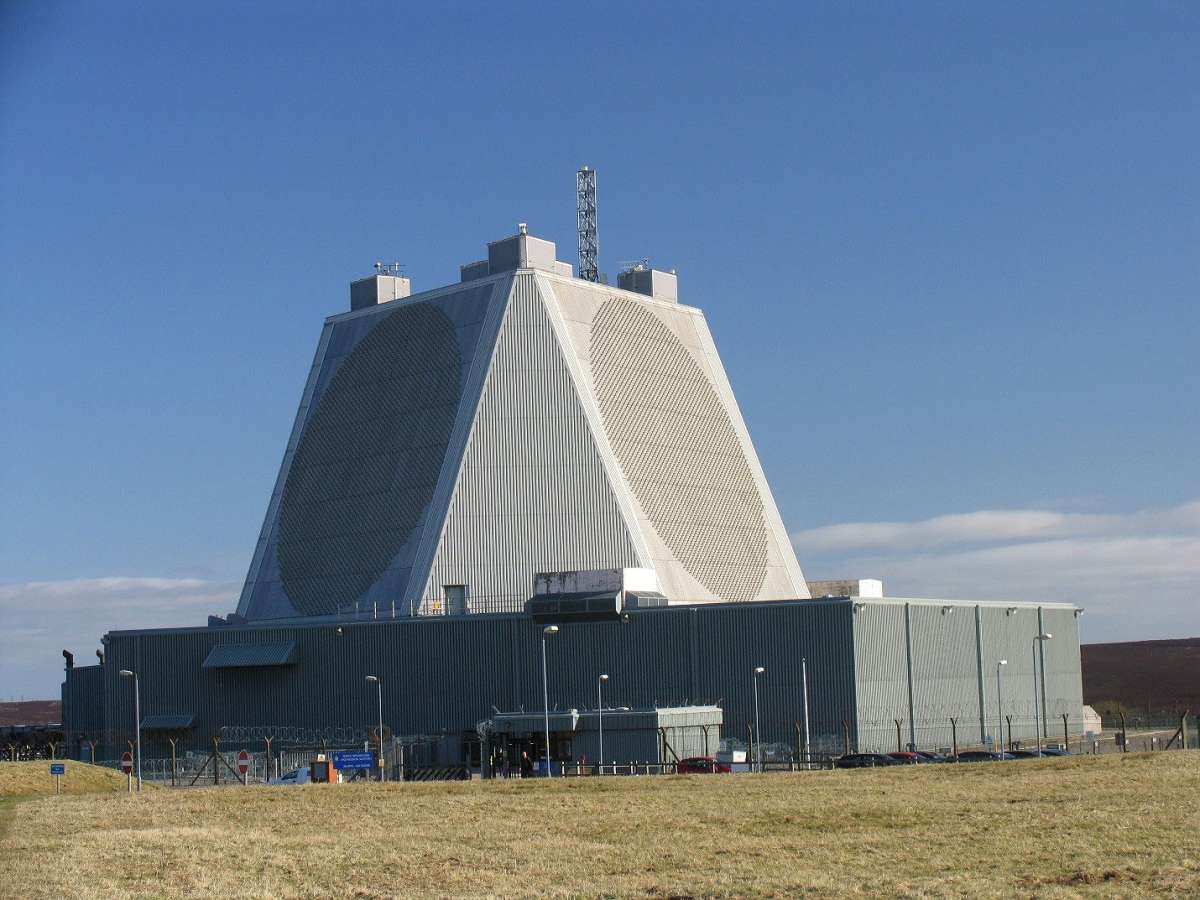- Jul 23, 2018
- 4,441

AN/FPS-123 PAVE PAWS
TOP SECRET
Collision
The operational AN/FPS-123 PAVE PAWS radar, apart of the Swedish Strategic Defence Network, is a highly advanced radar capable of identifying targets the size of a thumb both inside and outside the immediate atmosphere. Given that the radar was first established to forfill early warning capability it would still retain the possibility to identify Argentine aircraft within it's 80 degree positioning - due to their extreme proximity to the Antarctic Peninsula and not only that their continues heightened movement they would undoubtedly pass through the extensive radar range. Sweden operates only two of these systems, at either end of the continent.
Argentine operations have been entirely focused around the operation of the TPOL station sitting on the Antarctic Peninsula, this sits some distance from Palmer Land on Wiencke Island, at no point has the Argentine forces began identifying satellite bases around the continent and at no point has the Swedish operations in the region had any reason to communicate with the radar facility, nor would there be any link capable of tracking such a facility. Nonetheless these facilities were very new to the continent and the personnel present to facilitate the requirements of the radar, which is extensively excessive to it's operational requirements, was intentional in order to ensure it's safe operation and retention in the hostile region. The facility in Wilkes Land sits isolated and at no point is it ever stated to be anywhere near the half-constructed Wilkes Land TPOL - it has been clearly stated that the Wilkes Land TPOL station is being constructed on the site of the former Australian Casey Station and during contact between Australia-Sweden the radar facility at no point became discovered, which you would have expected it have... if they were building in it's immediate vicinity.
It should be explicitly stressed that Palmer Land is NOT a TPOL (Temporary Patroleum, Oil and Lubricants) station and is only the site of the AN/FPS-123 PAVE PAWS TOP (Temporary Operating Position). The surveillance of Argentine forces was unclear and uncountable thus to make response fair it would appear that intelligence captured by the aircraft was unclear, unreliable and unidentifiable. Nonetheless, I am sure the images are retained.
To reiterate, the additional vessels arriving at the Antarctic Peninsula did so in order to refuel at the TPOL (Temporary Patroleum, Oil and Lubricants) station and would have no reason to arrive at the Palmer TOP. Whilst it is accepted that the Wiencke Island TPOL has been discovered, the Palmer TOP certainly has not.
Personnel in the region were issued immediate orders to begin the deconstruction and/or destruction of Swedish facilities following success in the Global Assembly. The focus was on the assurance that all operational equipment could be relocated to an agreed location - this included the AN/FPS-123 PAVEPAWS which was immediately planned to move to mainland Sweden upon the return of the extensive deployment now joining Operation Molybdenum. The active TPOL station would have the remaining fuels, oils and lubricants drained and stored onboard attending vessels whom would remain in situ pending further instruction from the Department for Defence.
Whether or not the post was countered due to personal circumstances, this does not change realism. As stated it was accepted that the Argentine Icebreaker had a substantially reinforced hull in order to penetrate ice, this was not at all equal to the penetration of armoured steel which was substantially tougher than that of ice. The damage to the ARA Almirante Storni had to be more substantial than paint damage and denting, it has just collided and pieced straight down the middle of a warship. The damage of the steel piercing through the weaker points of the hull, as after all it is not the entirety of the ship reinforced to the extent that the bow, would see the ARA Amirante Storni significantly wounded even if she were still in an operational state.
Meanwhile at the site of the recovery the Swedish frigates would ensure they were at an appropriate distance to allow the British highly trained teams conduct their assistance mission without disruption or creating any further risk to the safety of dive teams of operational vessels. It was no secret that there were likely to be no survivors due to the harsh conditions, the nature of the violent interaction and the sheer brute strength of ARA Almirante Storni. As each death came through the Department of Defence a deafening silence surrounded control rooms, senior officers offices and the relevant authorities. Preparations would begin to be made for the appropriate repatriation of dead servicemen and women onboard HSwMS Snö and all relevant information would be fed through both the Executive Office of the Prime Minister of Sweden and the Nordic Council Committee for Defence and Intelligence - all by encrypted means. The British were thanked for their unconditional service to human life and awaits further on the status of the diving teams.
Naio90 Jamie Odinson



